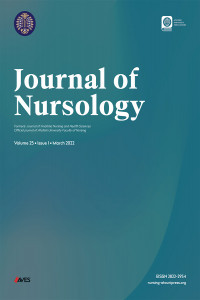YARDIMCI ÜREME TEKNİKLERİNDE PERİNATAL SONUÇLAR
Son yıllarda önemli oranda artış gösteren yardımcı üreme teknikleri sonucu tahmini olarak 5 milyon doğum gerçekleşmiştir. Modernleşme sürecinde kadınların mesleki ve sosyal alandaki yaşam tarzı değişiklikleri, evlenme yaşını ve evlilikte çocuk sahibi olmak için girişim yaşını arttırmıştır. Gebelik yaşının artmasıyla spontan gebeliklerde kromozomal anomaliler, abortus, abortus imminens, konjenital anomaliler, preeklemsi, plasenta previa, plasenta dekolman, preterm eylem, erken membran rüptürü, düşük ağırlıklı doğum, makrozomik fetüs, operatif vajinal doğum, sezaryen ve perinatal kayıp riskleri de artmaktadır. Yardımcı üreme teknikleri işlemlerine bağlı teorik ve deneysel riskler olduğu epidemiyolojik sonuçlarla da desteklenmektedir. Yardımcı üreme teknikleri ile oluşan gebelikleri gerek infertilite nedenine gerekse yardımcı üreme tekniklerine bağlı işlemlere yönelik olsun riskli gebeliklerdir ve izlemler sırasında bu durumun akılda tutulması gereklidir. Bu nedenle yardımcı üreme tekniklerini kullanacak ebeveyn adayları bütün potansiyel yararlı ve zararlı etkiler konusunda hemşireler tarafından bilgilendirilmelidir. Anahtar Kelimeler: Yardımcı üreme teknikleri; perinatal sonuçlar; riskli gebelik; hemşirelik. ABSTRACT Perinatal outcomes in assisted reproductive techniquesIt is now estimated that around 5 million babies have been born as a result of assisted reproductive techniques showing a significant increase in recent years. The age of marriage and age of entry having children into marriage has increased with women’s professional and social life style changes in modernization process. Chromosomal abnormalities, abortion, imminent abortion, congenital anomalies, preeclampsia, placenta previa, abruptio placenta, preterm labor, premature rupture of membranes, low birth weight, macrosomic fetus, operative vaginal delivery, cesarean section and perinatal loss risks in spontaneous labor are increasing and also gestational age. The theoretical and experimental risks related with assisted reproductive techniques are supported by epidemiological results. Assisted reproductive techniques pregnancies are high risk pregnancies depending on whether assisted reproductive techniques and the cause of infertility and this condition is essential to keep in mind during follow-up. Therefore, parent candidates will use assisted reproductive techniques should be informed by nursing about all the potential beneficial and harmful effects by nurses. Keywords: Assisted reproductive techniques; perinatal outcomes; high risk pregnancy; nursing.
